Digital marketing, often known as internet marketing or online marketing, is one of the hottest trends these days. After all, why not? In the last decade, people’s use of the internet has skyrocketed. Humans rely extensively on the internet for anything from finding a nearby business to getting any type of info they need to complete their tasks.
This blog post will explain what digital marketing is and the numerous sorts of digital marketing services that businesses and individuals may use to boost their online presence. This blog would also discuss the history of digital marketing and why it is necessary for business owners to build their companies.
What is Digital Marketing?
“Digital marketing is a means of using digital or electronic technologies to raise awareness and trust for your brand or product/services.”
These aren’t limited to online marketing outlets however. Even today, offline marketing media such as television, radio, and electronic billboards play a significant role in digital marketing. While most people identify digital marketing with online marketing channels/techniques like SEO, PPC, social media marketing, email marketing, and others, a solid digital marketing strategy will also include offline marketing.
Learn More: Why Digital Marketing is important for business
Types of Digital Marketing
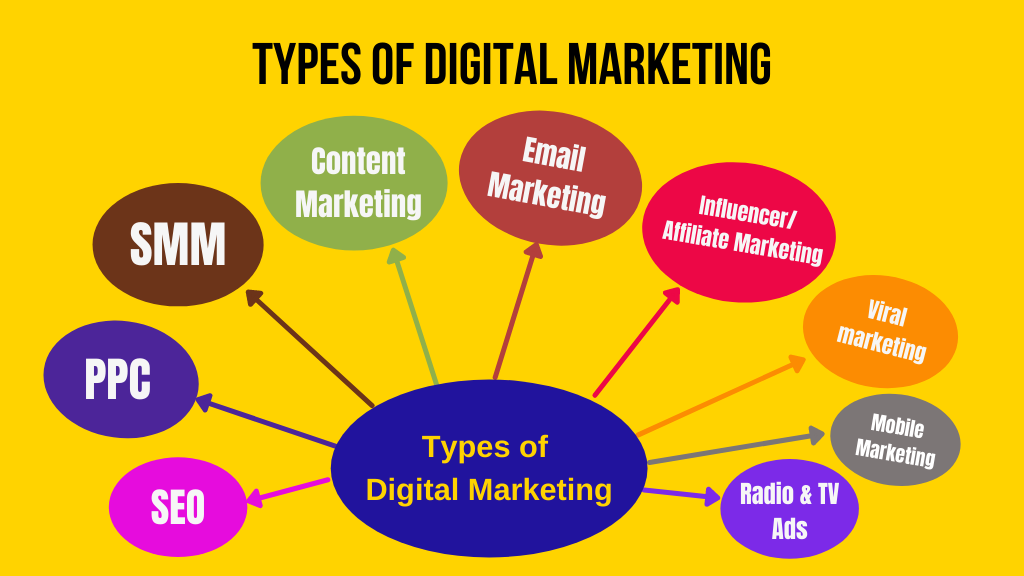
Search Engine Optimization (SEO)
“SEO stands for search engine optimization, and it is the science and art of getting your web pages to rank higher in search engine results pages (SERPs).”
The aim of SEO is to get a company’s website to rank higher in Google search results, resulting in more traffic from search engines. To do so, SEO marketers look for words and phrases that people use to search for information online and incorporate those terms into their own content.
According to Moz’s “Beginners Guide to SEO,” SEO includes a variety of factors, including the words on your web pages, how other sites connect to you on the web, and how your website is organised. According to Salary.com, an SEO specialist will earn about $59,000.
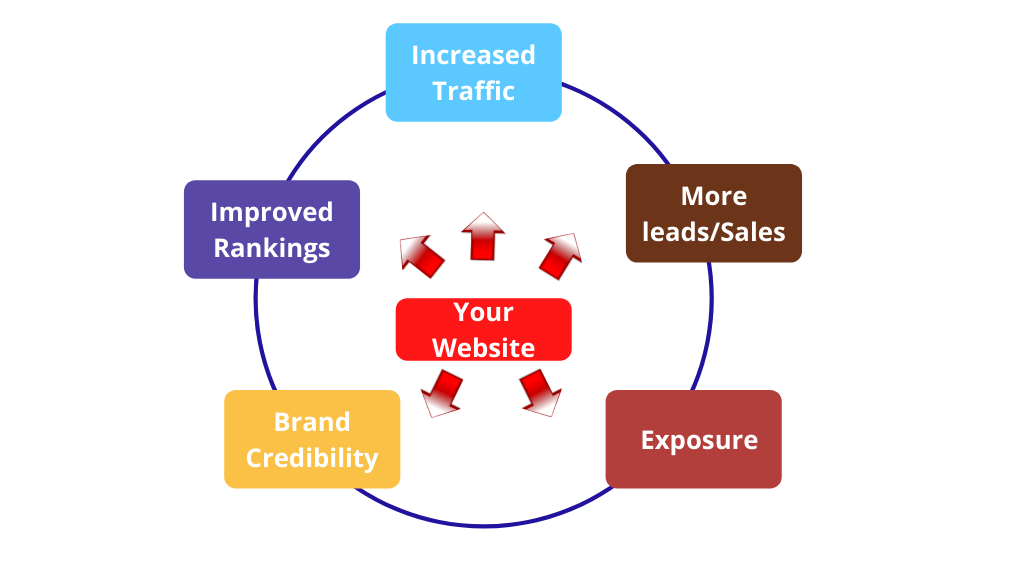
So, what are some ways to improve a website’s SEO? It’s critical to recognise that one of the things that makes SEO difficult is that the answer to this query is often contingent on Google and its most recent algorithm.
With that in mind, from Moz’s Beginners Guide to SEO, here are a few of the most important things for SEO strategists and marketers in general to learn about how SEO operates today:
Content indexing:
It’s important to make it easy for search engines to understand what your site’s material is by using alt text for photos and text transcripts for video and audio content.
Good link structure
It’s critical that search engines can “crawl” your site layout and find all of your content quickly. An SEO specialist can format links, URLs, and sitemaps in a variety of ways to make them more available to site crawlers.
Keywords and keyword targeting –
One of the fundamental building blocks of SEO is properly deploying your keywords – i.e. the search terms you want your site to be found for – in your content and headers. Stuffing the material with as many keywords and keyword combinations as possible is no longer a smart idea.
Properly deploying your keywords
i.e. the search terms you want your site to be found for – in your content and headers is one of the fundamental building blocks of SEO. It’s no longer a good idea to cram as many keywords and keyword combinations as possible into your material.
Pay-per-Click (PPC)
“Pay-per-click marketing is concerned with Google’s sponsored search results and includes bidding on specific keywords that will bring you the most traffic.”
Paid ads and advertised search engine results are referred to as pay-per-click. This is a short-term type of digital marketing, which means the ad will disappear until you stop paying. PPC, like SEO, is a way to boost a company’s online search traffic.
Advertisements that appear at the top and sides of a page of search results, ads that appear when searching the site, ads that appear before YouTube videos, and ads that appear in mobile apps are all examples of pay-per-click advertising.
Another feature that sets pay-per-click apart from SEO is that you just pay for the results. In a traditional PPC campaign, such as a Google AdWords campaign, you only pay when someone clicks on your ad and visits your website. Pay-per-click ads allows you to invest almost any amount of money.
Some businesses may see a return on their investment of a few hundred dollars, but many large businesses spend tens of thousands of dollars per month on pay-per-click advertising.
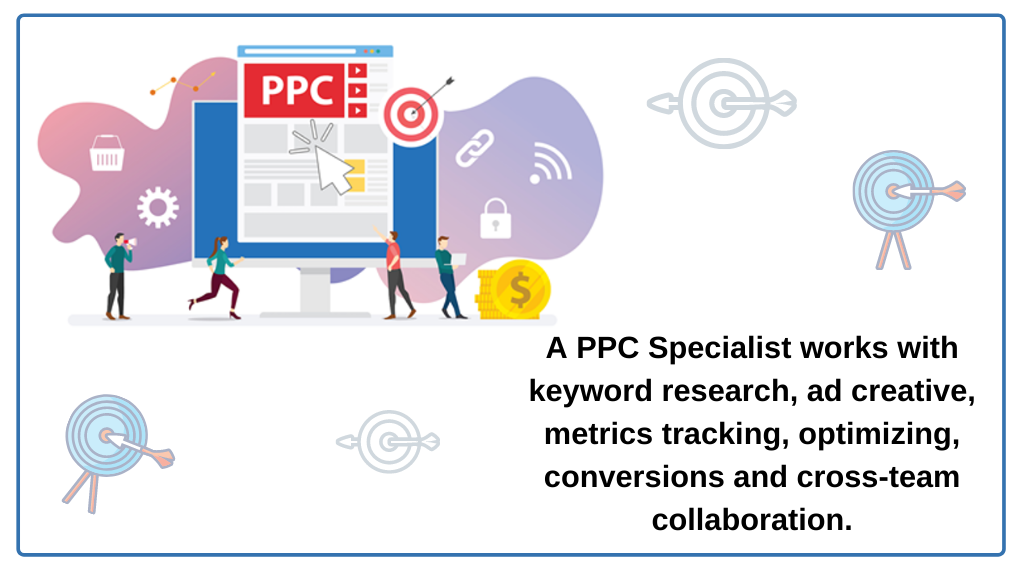
The cost of running an ad or promoting your search results is largely determined by the level of competition for your keywords. Keywords with high competition (i.e., those with a lot of people looking for them and a lot of places seeking to be searched for them) will cost more, whereas keywords with lower competition will likely cost less.
You can select whether your ad or advertised results are shown to users all over the world or only within a particular geographic region when you set up a pay-per-click campaign. According to Google, if you’re selling a brick-and-mortar company, the ability to target advertising by location lets you avoid wasting ad dollars by serving ads to people who don’t live near your business Google.
Social Media Marketing
“The use of social media platforms to engage with your audience and promote your brand is known as social media marketing.”
This encompasses all a company does on social media. While almost everyone is familiar with social media, marketers must use it in a strategic and coordinated manner. Social media marketing entails much more than just posting to social media channels and reacting to comments.
Efforts must be organised and consistent rather than an afterthought if they are to be successful. There are several online tools available to automate and schedule social media posts to help keep posts consistent, but marketers can only use automation as a tool, not as a “set it and forget it” solution. If there is no actual person behind the posts, users can easily find it out.
Social media marketers do not operate in a vacuum from the rest of the marketing team. Social marketers must collaborate with the rest of the marketing team to ensure that their message is consistent across all channels, both online and offline, so that the entire brand is telling the same storey.
Analytics is an important aspect of social media marketing: social media marketers must be adept at evaluating the output of their posts and developing strategies based on that information.

According to Forbes contributor Jayson DeMers, another incentive for marketers to regularly measure and monitor their campaigns is that this data helps marketers to demonstrate to business leadership that their efforts are driving users to connect with the brand and ultimately turning users into consumers, thereby providing value to the organisation.
To put it another way, social media marketing is a lot more difficult than maintaining a personal Facebook or Twitter account. It necessitates a combination of innovative thinking and rational, data-driven planning, and it may be ideal for professionals who enjoy combining these two disciplines. According to Salary.com, a social media analyst with a bachelor’s degree will earn about $63,841.
Content Marketing
“Content marketing is a form of marketing in which relevant and consistent content is created in order to target a specific audience.”
To raise brand awareness, content marketing employs storytelling and knowledge sharing. The ultimate aim is for the reader to take a step toward becoming a customer, such as requesting more information, joining an email list, or purchasing something. Blog posts, tools such as white papers and e-books, digital video, podcasts, and other forms of content are all examples of content. It should, in general, first and foremost offer value to the customer, rather than simply market the brand or attempt to sell something. Content marketing is about developing a long-term, trustworthy relationship with your customers that can lead to several purchases over time rather than just one.
Content marketing works in tandem with other forms of digital marketing: it’s a way to integrate SEO search terms into new website content, and the results can be shared through social media and email marketing.
Analyzing your content marketing metrics will reveal a lot about your customers: what are they looking for when they come to your site? What types of content entices them to linger longer on the web and browse around? What types of things pique their attention and cause them to leave?
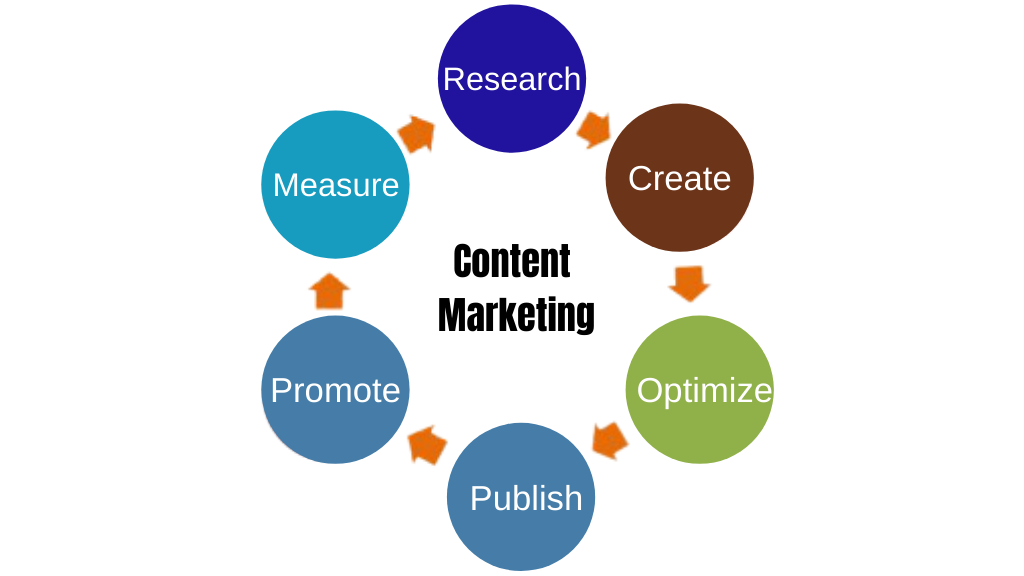
Content marketing, unlike pay-per-click advertising, is a long-term strategy. According to Marketo, a marketing automation company, marketers build up a library of content (text, video, podcasts, and so on) over time that will continue to bring users to the site via search engines.
This content library also aids in brand awareness and raises your profile as a reliable source of information. When users come to your site for details, you want them to remember you as an expert when it’s time to buy something.
For those who enjoy blogging, as well as video and audio production, content marketing is a fantastic option. However, as with all aspects of digital marketing, it necessitates good strategic and analytic abilities.
Learn More: Digital Marketing Project Ideas and Topics (2021)
Email Marketing
“The process of sending commercial messaging to a group of people via email is known as email marketing.”
Despite the rise of social media, mobile apps, and other platforms, email remains one of the most powerful marketing tools, according to Rogers. It can be used as part of a content marketing campaign to provide value to users and turn them into customers over time.
According to the American Marketing Association, email marketing professionals are skilled at not only creating persuasive strategies, but also understanding optimum audience outreach and evaluating consumer experiences and data, as well as making strategic decisions based on that data.

The open rate – the percentage of recipients who opened the email – and the click through rate – the amount of recipients who opened the email and clicked on a connection in the email – are two predictive metrics that marketers are still trying to boost with email marketing tools.
There are many things marketers can do to make their emails more attractive to consumers and more likely to be opened, according to Constant Contact, a leading email marketing software provider. There are some of them:
Create a Sense of Urgency
Writing email copy that informs recipients that a promotional offer is only valid for a limited time or that a limited number of the offer are available will increase the number of people who click through to your website.
Personalize Your Email:
Using the recipient’s name in your emails and subject lines has been shown to increase open and click through rates. (For instance, “Katie, a special offer just for you.”)
Let Recipients Set Their Preferences:
Allowing users to choose how much they want to hear from you will help you keep some of your email subscribers on your list and clicking on your newsletters.
Influencer/Affiliate Marketing
“Influencer marketing is a form of online networking advertising who enlists the support of influencers to endorse and promote your items.”
We’ve all fawned over celebs and anxiously awaited their next social media update. Then there are industry specialists or content creators who have their own followings. Many businesses collaborate with influencers to raise brand awareness and convert at least some of their massive fan base into profitable leads.
Many others allow affiliates or brand representatives to reach out to a diverse audience and generate cash. Furthermore, Google AdSense is a great way for website owners to make money by displaying adverts for a variety of products and services while also gaining greater visibility for their businesses.
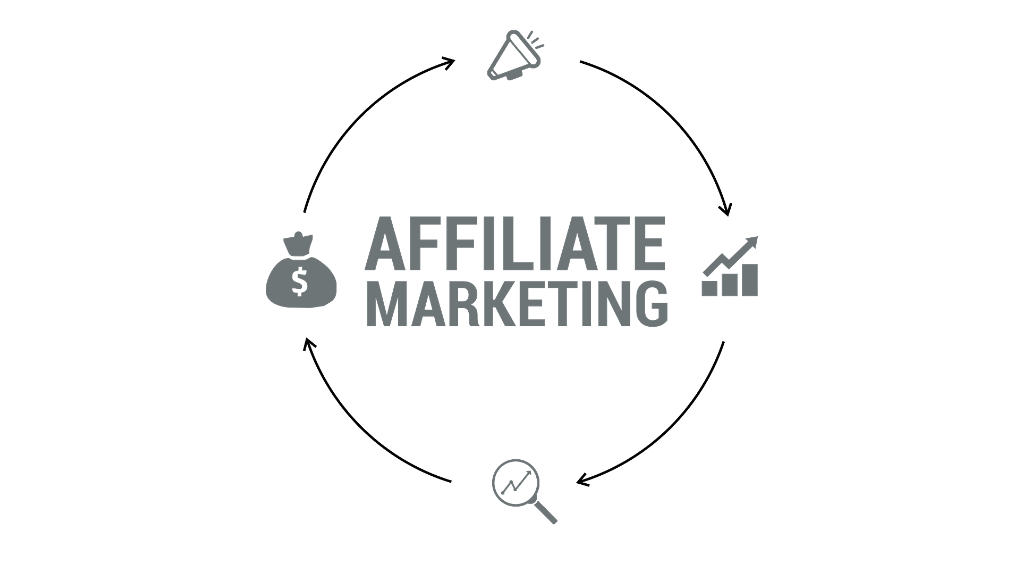
Influencers are even hired by many internet firms to take over their social media channels for a day or two to work their magic and direct their followers to their page or website. While these influencers or affiliates may be paid a flat fee or a percentage of sales and leads, this type of digital marketing requires thorough research to be effective.
Because you’re not only entrusting people outside your organization to speak for you, but you also need to be certain that their image/personality will complement yours. For an efficient campaign, we strongly advise that you work out the details of your engagement with such influencers and affiliates ahead of time.
Viral marketing
“Viral marketing is a style of marketing in which customers use social media to give or share information about a company’s products or services.”
Anyone may become an online sensation in today’s world if they create unique content that you can’t afford to miss as a consumer. This content can take any form, such as videos or blog posts, and can cover a wide range of genres or topics, such as travel and food, beauty, online journalism, and so on.
Advertisers are increasingly seeking out content creators like these in order to have information about their products/services carefully put inside the content. Although there is no surefire technique to make content go viral, this type of digital marketing can result in short-term but significant increases in site traffic or the number of people interested in your company.

Mobile Marketing
“Mobile marketing is a way of marketing through Text messages, social media, blogs, email, and smartphone apps.”
This form of digital marketing focuses on reaching out to your target audience through their smartphone or tablet. Text messages, social media, blogs, email, and smartphone apps are all examples of mobile marketing. Marketers can customize deals or special content based on a customer’s place or time, such as when they visit a store or attend an event.
The aim of this type of digital marketing is to reach out to your target audience through their smartphone or tablet. Mobile marketing includes text messages, social media, blogs, email, and smartphone applications. Marketers may tailor promotional offers or content to customers depending on their location or time, such as when they visit a store or attend an event.

Users in 2017 invest much more time with smartphones than they do with television. According to the TechCrunch post, 15 percent of the app time is spent on entertainment apps like Netflix and Hulu, 19 percent on Facebook’s mobile app, 12 percent on other social and messaging apps, and 11 percent on gaming apps.
According to Retail Dive, 45 percent of all shopping requires the use of a mobile device in some way, whether it’s for testing, price comparison, or making a purchase. That number is 57 percent for the majority of Millennials (those born between 1981 and 1997), according to the Pew Research Center.
Marketers understand that you must take your message to your customers where they are, and in 2019, that means your future customers are on their phones.
Radio and TV Ads
“Radio and television advertisements are a type of marketing that uses radio or television ads as a marketing medium.”
When radio and television were initially established, they seized the globe by storm, but they are quickly giving way to other, more powerful media and communication platforms. To top it off, Internet and/or mobile radio and television are now available. Until recently, it was difficult to know exactly how many radio listeners, TV viewers, and print ad readers responded to a message.
However, with the arrival of digital radio and television, reaching the people you want to reach, when and where you want to reach them, has never been easier. Even while these advertising channels are fading into obscurity, this laser focus is a significant draw. Though they may not mislead, online/mobile video/audio streaming platforms such as Netflix, Amazon Prime, Gaana, Saavn, and others should be considered.